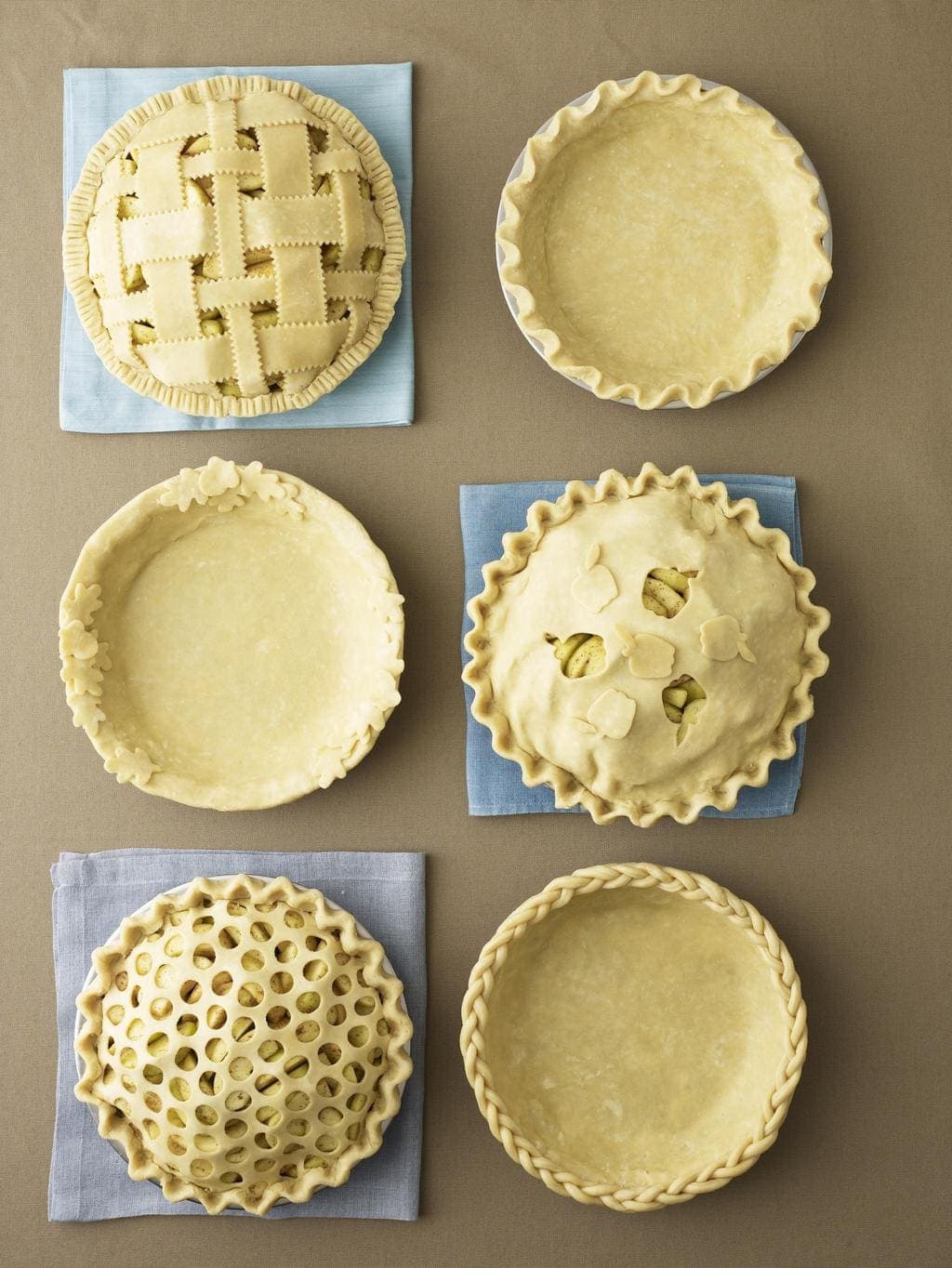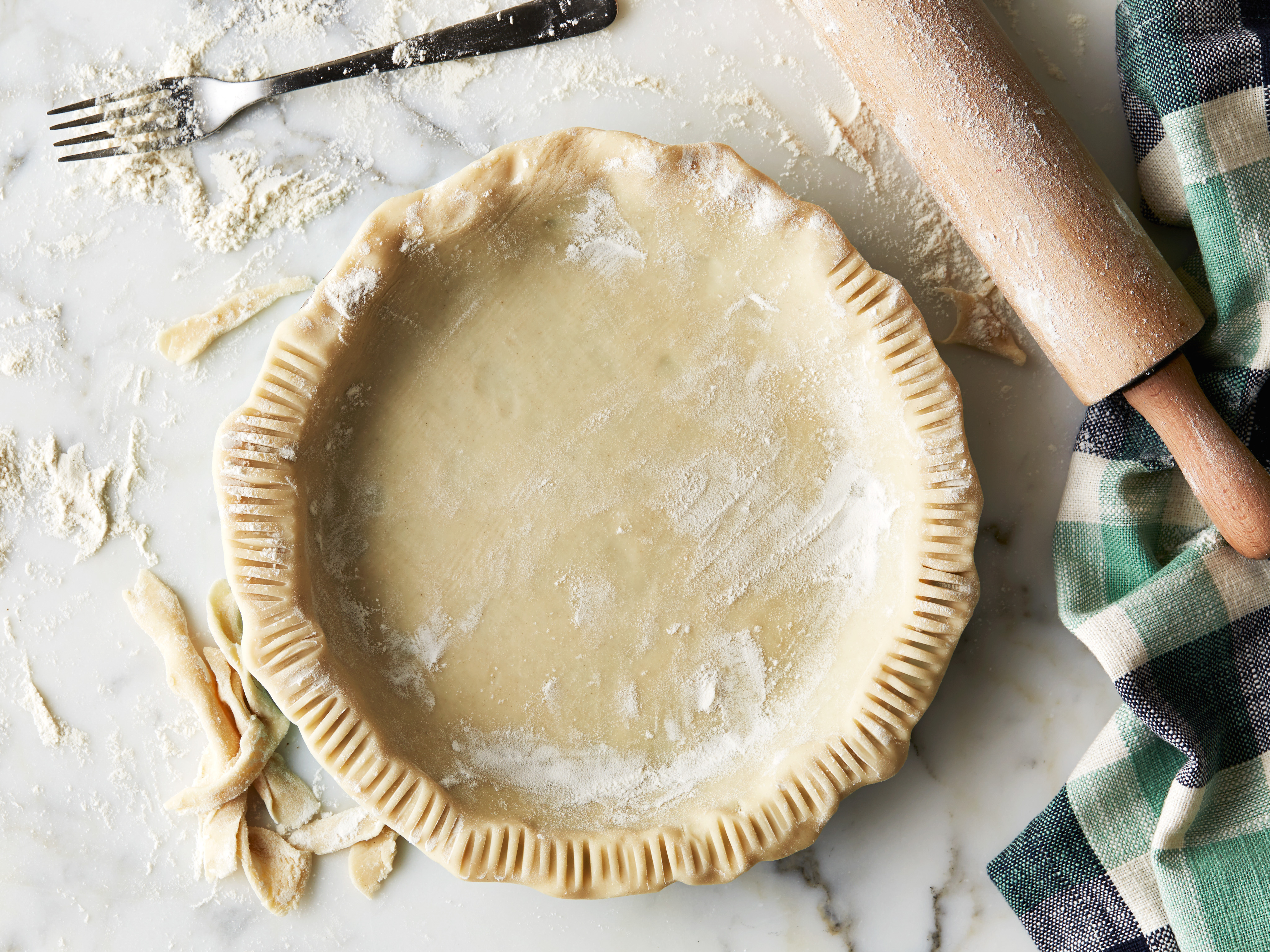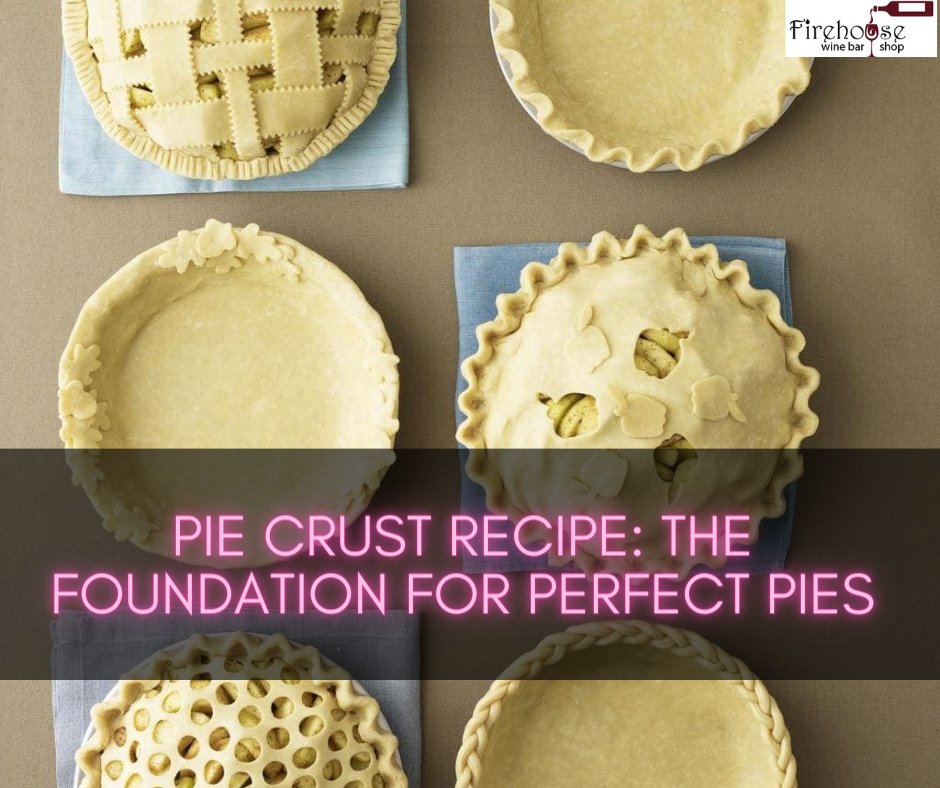Basics Of Pie Crusts
When it comes to creating the perfect pie, the crust plays a crucial role. A pie crust acts as the foundation, providing structure and texture to your pie. Understanding the basics of pie crusts is essential in achieving a flaky and delicious result.
A traditional pie crust is typically made with just a few key ingredients: flour, fat (such as butter or shortening), salt, and water. The ratio and technique used to combine these ingredients can vary depending on the desired outcome. Learning how to mix, roll, and shape your pie crust properly is essential for pie-making success. With practice and attention to detail, you can master the art of creating a beautiful and tasty pie crust.
1 Understanding The Importance Of A Good Pie Crust
When it comes to baking pies, the crust is the foundation that holds everything together. A good pie crust is essential for creating a delicious and visually appealing pie. It provides the perfect balance of texture and flavor, with a flaky and buttery exterior that complements the filling. A well-made crust can elevate the overall taste experience and make your pie truly unforgettable. It adds structural support and creates a pleasing contrast to the filling. So, whether you’re making a sweet or savory pie, don’t underestimate the importance of a good pie crust in creating a truly perfect pie.
You may want to read: Key Lime Pie Recipe: Tangy and Sweet Delight in Every Bite
2 Key Ingredients In A Pie Crust Recipe
Two key ingredients in a pie crust recipe are flour and fat. The quality of flour used greatly affects the texture and taste of the crust. It is recommended to use all-purpose flour for a balance between tenderness and structure. The choice of fat, such as shortening, butter, or a combination of both, also plays a crucial role. The fat creates flaky layers in the crust when it melts during baking. The ratio of these ingredients determines the final texture of the pie crust, with variations ranging from tender to crumbly.
Classic Pie Crust Recipe
Start by combining 2 1/2 cups of all-purpose flour with a pinch of salt in a mixing bowl. Cut in 1 cup of cold butter until the mixture resembles coarse crumbs. Gradually add ice water, one tablespoon at a time, until the dough comes together. Divide the dough in half and shape each portion into a disk. Wrap them in plastic wrap and refrigerate for at least 1 hour. Roll out the chilled dough on a lightly floured surface and use it to line your pie dish. Fill with your desired filling and bake according to your pie recipe. Enjoy your classic homemade pie crust!
1 Step-by-step Guide To Making A Flaky Pie Crust
To make a flaky pie crust from scratch, start by combining 2 1/2 cups of all-purpose flour with a pinch of salt in a mixing bowl. Cut in 1 cup of cold butter until the mixture resembles coarse crumbs. Gradually add ice water, one tablespoon at a time, until the dough comes together. Divide the dough in half and shape each portion into a disk. Wrap them in plastic wrap and refrigerate for at least 1 hour. Then, roll out the chilled dough on a lightly floured surface and use it to line your pie dish. Fill with your desired filling and bake according to your pie recipe. Enjoy your classic homemade pie crust!
2 Tips For Rolling And Shaping The Perfect Pie Crust
When it comes to rolling and shaping your pie crust, there are a few key tips to keep in mind. First, always start with chilled dough. This will make it easier to handle and prevent the butter from melting too quickly. Second, use a light touch when rolling out the dough. Too much pressure can result in a tough crust. Roll from the center outward in gentle even strokes to maintain an even thickness. By following these tips, you’ll be well on your way to creating the perfect pie crust for your delicious homemade pies.
Variations And Enhancements

There are endless possibilities for enhancing and customizing your pie crusts to add unique flavors and textures. Here are a few ideas to get you started:
- Different Types of Pie Crusts: Experiment with variations like shortcrust, puff pastry, graham cracker, or even cookie crusts for a different twist on your favorite pies.
- Adding Flavors and Textures: Infuse your dough with ingredients like spices, herbs, citrus zest, or even grated cheese to infuse additional flavor. You can also try adding crushed nuts or seeds for added crunch.
By exploring these variations and enhancements, you can take your pie crusts to the next level and create truly impressive desserts.
You may want to read: Pot Roast Recipe: A Delicious Comfort Food Classic
1 Exploring Different Types Of Pie Crusts (shortcrust, Puff Pastry, Graham Cracker, Etc.)
There are endless possibilities when it comes to pie crusts. Exploring different types of pie crusts can add a unique twist to your favorite pies. Shortcrust is the most common type, perfect for both sweet and savory pies. Puff pastry creates flaky layers that give desserts a luxurious texture. If you’re looking for a sweeter option, try using graham cracker crusts, which add a delicious crunch. Don’t be afraid to experiment with different crusts to find the perfect match for your pies.
2 Adding Flavors And Textures To Elevate Your Pie Crusts
When it comes to pie crusts, there is no limit to the flavors and textures you can add to elevate your creations. One simple way to enhance your crust is by directly incorporating different spices or herbs, such as cinnamon, nutmeg, or thyme, into the dough. Consider adding a touch of vanilla extract or citrus zest for a sweeter twist. To create a unique texture, experiment with adding crushed nuts or seeds to the crust. Think outside the box and let your creativity shine through in every bite.
Troubleshooting Common Issues

Troubleshooting Common Issues:
Perfecting a pie crust can be tricky, but you can overcome common issues with some troubleshooting. One common problem is a soggy bottom crust, which can be avoided by pre-baking the crust or using a pie weight. If your crust cracks or breaks while rolling, try patching it up with extra dough. Another issue is a shrinking crust, which can occur if the dough is not chilled properly or if it is rolled too thin. To prevent this, make sure to chill the dough adequately and roll it to the desired thickness. By following these troubleshooting tips, you’ll be able to create flawless pie crusts every time.
1 Dealing With Soggy Bottoms And Shrinkage
There are a few important steps to follow to avoid dealing with soggy bottoms and shrinkage in your pie crust. Firstly, pre-baking the crust can help prevent it from becoming soggy when filled with moist ingredients. Additionally, using a pie weight or docking the bottom of the crust with a fork can help prevent bubbles and shrinkage during baking. It is also important to properly chill the dough before rolling it out to ensure it holds its shape and doesn’t shrink in the oven. You can achieve a perfectly crisp and sturdy pie crust by addressing these issues.
2 Tips For Preventing Cracks And Breakage In Your Pie Crust
There are a couple of key tips to keep in mind when it comes to preventing cracks and breakage in your pie crust. First, avoid overworking the dough. Overmixing or kneading the dough can develop gluten, leading to a tougher crust that is more prone to cracking. Instead, gently mix the ingredients until just combined. Second, be sure to properly chill the dough before rolling it out. Chilled dough is easier to handle and less likely to break apart during shaping and transferring to the pie dish. By following these tips, you can achieve a beautifully intact pie crust every time.
Baking And Storage
After you have prepared your pie crust, it’s time to bake it to perfection. Follow the instructions in your recipe for the recommended baking time and temperature. Keep an eye on your crust as it bakes to ensure it turns golden brown and crispy.
Proper storage is essential to maintain freshness once your pie is baked and cooled. To keep your pie crust from getting soggy, store it in a cool and dry place. If you have leftover pie, wrap it tightly with plastic wrap or aluminum foil and refrigerate. Properly stored, your pie crust will stay fresh for several days, allowing you to enjoy delicious pies anytime you like.
1 Pre-baking Vs. Blind Baking Your Pie Crust
When it comes to baking a pie crust, there are two methods you can choose from: pre-baking and blind baking. The terms “pre-baking” and “blind baking” are often used interchangeably, but they actually refer to slightly different techniques.
Pre-baking refers to partially baking the crust before adding the filling. This is commonly done when the filling itself does not require baking, such as with a no-bake cream or custard pie. Pre-baking ensures that the crust becomes fully cooked and crispy.
Blind baking, on the other hand, involves fully baking the crust without any filling. This is typically done when the filling requires less time to bake than the crust or when the filling is delicate and may become soggy if baked for too long. Blind baking also helps to prevent a wet or undercooked bottom crust.
To pre-bake or blind bake your pie crust, follow your recipe’s instructions for the recommended time and temperature. To prevent the crust from puffing up, use pie weights or dried beans to weigh it down during baking.
Both pre-baking and blind baking techniques result in a perfectly cooked pie crust that will hold up well even with wet fillings. Choose the method that best suits your recipe and enjoy a delicious pie with a crisp and flaky crust.
2 Proper Storage Techniques To Maintain Pie Crust Freshness
To maintain the freshness of your pie crust, proper storage is key. Here are two techniques to keep your pie crust tasting its best:
- Refrigeration: Once you’ve baked or pre-baked your pie crust, allow it to cool to room temperature. Then, wrap it tightly in plastic wrap or place it in an airtight container and refrigerate. This will help preserve the crispness of the crust and prevent it from becoming soft or soggy.
- Freezing: If you don’t plan on using your pie crust right away, freezing is a great option. Place the cooled crust in a freezer-safe bag or container, and make sure to remove any excess air before sealing. Frozen pie crusts can last several months and be thawed overnight in the refrigerator when needed.
By following these storage techniques, you can enjoy fresh and delicious pie crusts whenever you’re ready to use them.
Conclusion

In conclusion, mastering the art of making a perfect pie crust is essential for creating delicious and impressive pies. By understanding the basics of pie crusts and the key ingredients involved, you can create a flaky and tender crust that elevates your homemade pies. Exploring variations and enhancements allows for creativity and adds unique flavors and textures to your crusts. Troubleshooting common issues ensures that your crusts turn out impeccable every time. Lastly, proper baking techniques and storage methods help maintain the freshness of your pie crusts. With these tips and techniques, you can confidently create delectable pies with a homemade crust that will leave everyone wanting more. Happy baking!
1 Recap Of Essential Tips For Perfect Pie Crusts
Here is a recap of essential tips to ensure a perfect pie crust. First, keep all ingredients cold for a flaky crust, including butter and water. Secondly, handle the dough gently and avoid overmixing to prevent toughness. Additionally, chilling the dough before rolling it out helps with easy handling. Use a light touch when rolling and shaping the crust to maintain flakiness. Lastly, pre-baking or blind baking the crust and properly sealing it will prevent sogginess. Following these tips will result in a delicious and picture-perfect pie crust every time.
2 Inspirations for Using Your Homemade Pie Crusts
There are endless possibilities for using your homemade pie crusts beyond traditional fruit pies. Get creative and experiment with different fillings and flavors to showcase your culinary skills. Consider making savory pies like quiches or pot pies filled with chicken and vegetables. Try making hand pies filled with Nutella or apple pie parfait cups for a sweet twist. You can also use your pie crusts as a base for other desserts like tarts or galettes. The options are limitless, so let your imagination run wild and enjoy the delicious results of your homemade pie crust creations.
FAQ About Pie Crust Recipe: The Foundation For Perfect Pies
Q: What type of flour is best for making pie crusts?
A: All-purpose flour is the best flour for making pie crust. It strikes a balance between tenderness and flakiness, which is ideal for pie crusts.
Q: Why is it essential to chill the ingredients before making a pie crust?
A: Chilling the ingredients, such as flour, butter, and water, helps prevent the fat from melting too quickly during baking. This results in a flakier and more tender crust.
Q: Can I use a food processor to make pie crust dough?
A: Yes, a food processor can be used to make pie crust dough. It helps quickly cut the butter into the flour, resulting in a more uniform and consistent texture.
Q: How thin should I roll out the pie crust dough?
A: It is recommended that the pie crust dough be rolled out to about 1/8 inch thickness. This thickness ensures that the crust bakes evenly and maintains its structure.
Q: Can I freeze pie crust dough for later use?
A: Yes, pie crust dough can be frozen for later use. Wrap it tightly in plastic wrap or a resealable bag before freezing, and thaw it in the refrigerator overnight before using.
Q: How can I prevent the pie crust from shrinking during baking?
A: To prevent the pie crust from shrinking during baking, make sure to chill the dough before baking, dock the crust with a fork to release steam, and use pie weights or dry beans when blind baking.

Andre Lotz immigrated to the United States from South Africa almost 20 years ago. Still, he didn’t feel truly at home until he settled in Mobile—a city that reminds him of his childhood home of Fish Hoek on the southern cape of Africa.

